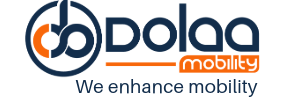Enhancing Traditional School Bus Tracking Solutions with IoT and Mobility
School buses are considered as the best option for commutation of kids to school as they are safer than riding in a car or walking. This blog will highlight the findings for the importance of protecting the school bus through a tracking system as school bus accidents are most likely to incur serious injury in the event of a crash.

According to NHTS (National Highway Traffic Safety Administration), over the past 11 years, school buses annually had about 26,000 crashes on an average resulting in 10 deaths out of which 25% were drivers, and 75% were passengers.
According to the Fatality Analysis Reporting System report from 2009 to 2018, 1,207 people died in school-transportation-related crashes with 121 deaths/year on an average, and 249 were school-age people.
Between this forecasted period, there were 317,789 fatal motor vehicle crashes occurred in the USA with 1,083 (0.3%) being school transportation vehicles.
Parents in fear
Parents live in a constant fear about the where abouts of their wards till the time they return. While schools are safe havens, the daily commute to and from the school is a cause of anxiety for most parents. Roads are not safe.
In Accident Cases, Drivers Are Responsible 77% of the Time: Speeding, Impaired Driving, and Distractions are Key Factors
In the majority of accident cases, drivers bear responsibility, accounting for 77% of incidents. Common factors contributing to driver liability include speeding, reckless overtaking, driving under the influence of alcohol or drugs, and distractions. Cellphone use stands out as a significant distraction among drivers. Despite the potential of technology to mitigate distractions and prevent accidents involving school buses and innocent children, school administrations often hesitate to integrate cutting-edge technology into their bus fleets. Even the most technologically advanced school bus fleets often rely on inconsistent GPS tracking devices with unreliable internet connections.
According to a report by the World Health Organization (WHO), individuals aged 15-29 are more likely to perish in road accidents or suicides than from diseases or infections. Ironically, while we may have triumphed over natural adversaries, we are still grappling with the perils of modern society. Ensuring the safety of schoolchildren on the roads is paramount. While traditional fleet tracking systems represent a step in the right direction, their effectiveness remains questionable.
Traditional Fleet Tracking Systems
Fleet tracking systems have been in existence for quite some time now. When implemented on a fleet of school buses, these systems utilize GPS tracking solutions and GSM to provide real-time location reports to fleet administrators. However, these systems lack sophistication in terms of capabilities such as alerting distracted drivers, imposing speed limits, or detecting intoxicated drivers. Despite their limitations, traditional tracking systems have transitioned from being a luxury to a necessity. By integrating IoT devices into school buses, these vehicles can become more secure and operationally efficient. Additionally, cloud services enable mobility solutions, allowing parents to track the school bus carrying their children in real-time via a mobile app.
The modern school bus tracking system
The solution integrates GPS, GSM, and RFID technologies to monitor various aspects of student transportation. This includes tracking attendance on the bus, recording drop-off and pick-up times and locations, identifying absences, and providing alerts to both the driver and concerned parents as needed.
Moreover, the solution empowers school bus operators to optimize their routes, enhance route utilization, minimize operational costs, and ensure compliance with the latest regulations in the school transport industry. This includes implementing pre-trip vehicle inspections as mandated by regulations.
On-road safety
The on-board diagnostic (OBD) device attached to a vehicle’s dashboard gathers vital stats about a school bus in the fleet in addition to reporting live location. The device has necessary sensors to detect a rowdy driver-one who corners harshly, over speeds, takes sudden turns, overtakes other vehicles, etc. If a driver has gone overboard and the admin believes his action might harm little children, he can immobilize the engine remotely and send a cop in his direction. To make sure, a driver is undistracted while driving. The driver’s mobile phone enters lockdown mode as soon as the OBD detects motion.
Modern school bus tracking systems offer a range of features tailored to streamline fleet management and enhance child safety. Designed to transform standard buses into Smart Buses, these services simplify administrative tasks associated with ensuring children’s safety.
Key features include:
- Real-time tracking: Monitor bus locations in real-time via a web interface.
- Route replay: Review the routes taken by buses through route playback functionality.
- Geo-fencing: Receive alerts when buses depart from predefined geographic areas.
- Geo-tagging*: Mark each bus stop on a map to track bus positions relative to school stops.
- Parent alerts: Parents can receive notifications from Tata Docomo service regarding the bus’s proximity to their child’s stop.
- Speed estimation: Access average and real-time speed data for buses.
- Over-speeding alerts: Set speed thresholds and receive SMS alerts for instances of over-speeding.
This vehicle tracking system offers a straightforward yet highly practical solution for school authorities and parents alike, facilitating enhanced safety and peace of mind.
Source: Peerbits
Author
dolaaadminRelated posts
Transport Management System Essential for Schools
Transport Management System Essential for Schools Transportation holds a crucial
Driving Sustainable Development: The Crucial Role of Mobility in Advancing the SDGs
Driving Sustainable Development: The Crucial Role of Mobility in Advancing the S
Indian Perspective on Employee Commuting
Indian Perspective on Employee Commuting India, being the world’s most pop

